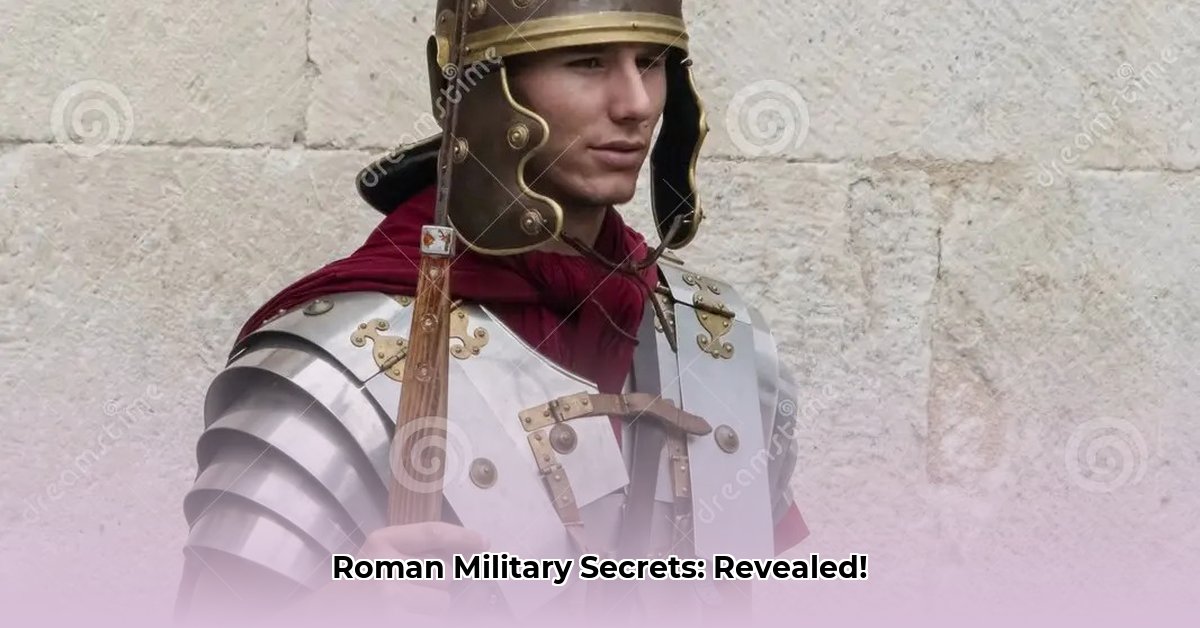Ever wondered what truly made the Roman army an unstoppable force? It wasn’t just their discipline; it was a meticulously developed system of ancient Roman military clothing, armor, and weaponry that evolved over centuries to adapt to every battlefield and climate. Consider this resource to learn more about Roman armour. Beyond casual depictions, Roman soldiers were equipped with a sophisticated array of gear, from their foundational tunics to their formidable hobnailed boots, each piece playing a critical role in their dominance across continents. This exploration delves into the ingenious design, practical function, and continuous evolution of the Roman soldier’s kit, a true testament to their military prowess.
The Evolution of Roman Military Gear: From Citizen-Militia to Professional Legion
The formidable power of the Roman army stemmed not solely from valor but also from precisely engineered equipment, thoughtfully integrated for tactical flexibility and efficient supply chains. Over centuries, Roman military gear underwent significant changes, driven by evolving adversaries, technological advancements, and profound shifts within Roman society itself.
Early Beginnings: The Citizen-Soldier
Initially, the early Roman army comprised a citizen militia, with soldiers providing their own equipment. These “hoplites,” named for their circular hoplon shields, were primarily spearmen, using an 8-foot (2.5 m) thrusting spear, a short slashing sword, a bronze helmet, greaves for their lower legs, and a bronze or stiffened linen cuirass. Their formation mimicked the Greek phalanx, adapted from Etruscan practices. Citizens were categorized by wealth, obligated to furnish their own military equipment, directly linking citizenship, property, and military service.
The Punic Wars (3rd-2nd centuries BCE) marked a pivotal transition, solidifying the famed legion. The army divided into three distinct divisions: the young hastati (1200 men), the slightly older principes (1200 men), and the veteran triarii (600 men), alongside lightly armed velites recruited from the poorest citizens. All wore bronze helmets and breastplates (mail for the wealthier) and carried a semi-cylindrical shield (scutum). Hastati and principes carried two pila (javelins), each with a 4-foot shaft and 2-foot iron shank. The velites carried lighter javelins and smaller, often circular, shields, some wearing wolf skins for identification.
Around the 3rd century BCE, the Romans adopted the gladius hispaniensis (Spanish sword), replacing their earlier thrusting weapons. Soldiers also carried a pugio (dagger). Defensive gear included mail body armor (lorica hamata) or plate strapped across the chest for poorer soldiers, various helmet styles, and the scutum (4 ft by 2.5 ft) made of plywood covered in calfskin.
The Marian Reforms: A Professional Roman Army Emerges
A watershed moment arrived with Gaius Marius in 107 BCE. Recognizing the need for more soldiers, he defied tradition, recruiting from Rome’s poorer, unpropertied citizens (capite censi). These new Roman soldiers served for pay and spoils, not civic duty. Following these Marian Reforms, the legion became a permanent, professional force. The state provided all equipment, weapons, armor, and clothing, standardizing gear. Distinctions based on age and experience were abolished; all legionaries became heavy infantry, armed uniformly with a pilum and a gladius. This professionalization, however, inadvertently shifted soldier loyalty from the Republic to their generals, contributing to later civil wars.
Post-Reform Innovations and Adaptations
After Augustus, the army became fully professional, integrating auxiliaries like Cretan archers and Numidian slingers. While auxiliaries often carried lighter shields and sometimes different primary weapons (e.g., no pilum), they still wore helmets and mail shirts.
Later changes included the lorica segmentata (segmented plate armor), appearing as early as 9 CE (Teutoburg Forest findings). This distinct armor, made of overlapping metal strips, offered excellent protection but was harder to repair in the field than lorica hamata. Lorica squamata (scale armor), consisting of small metal plates sewn onto a fabric backing, offered a balance of protection and flexibility, often used by auxiliary troops and cavalry. The Romans often copied successful designs from enemies, adopting mail armor, cavalry harnesses, and even siege weapons. Contact with the Parthians introduced them to heavily armored cataphracts and mounted archers, which they later incorporated.
By the 4th century CE, the legionary’s attire subtly changed. While body armor became less common, the spatha (a longer slashing sword) became standard, and a variation of the pilum, the speculum, or leaded darts (plumbatae/martiobarbuli) were used. Oval shields, the Intercisa helmet, cloaks, trousers, long-sleeved tunics, and boots (replacing caligae) marked this later period.
A Soldier’s Wardrobe: The Intricate Layers of Ancient Roman Military Clothing
Behind the impressive armor, Roman soldiers wore practical, purpose-designed clothing that adapted to diverse climates across the vast Roman Empire. This was no simple tunic, but a foundational system critical for comfort, protection, and endurance.
The Versatile Tunic: Base Layer of Endurance
The core of a Roman soldier’s attire was the tunic (tunica). These loose-fitting, short-sleeved garments, usually made of wool or linen, typically ended above the knee. While often undyed (creamy white, brown, or black/grey), they could be dyed red or other colors, sometimes indicating status or unit. For warmth, especially in colder climes, soldiers, like Emperor Augustus who reportedly wore four tunics, would layer them. It’s plausible that soldiers purchased locally made long-sleeved tunics to wear underneath their standard Roman ones for additional insulation.
Belts and Baldrics: Symbols and Utility
The cingulum militare (military belt) was a crucial element. This metal-studded leather belt supported the gladius (short sword) on the left hip and often a pugio (dagger) on the right, ensuring weapons were always at hand. The cingulum was not just functional but also a status symbol, often ornate with one to nine straps. Baldrics, worn diagonally across the shoulder, further secured swords or additional tools.
Caligae: The Enduring Footwear of the Empire
The quintessential Roman military footwear was the caligae (hobnailed sandal-boots). Engineered for extensive marching and durability, these robust boots, reinforced with hundreds of iron hobnails, offered exceptional traction across varied terrains. Their open design provided crucial ventilation in hot climates.
However, the hobnailed design had drawbacks. A notable historical account details the tragic death of a centurion, Julianus, who slipped on a smooth surface during a siege while wearing caligae. Despite this, caligae remained effective, balancing sturdiness, ventilation, and grip. In colder regions like Britannia, the Roman army pragmatically transitioned to enclosed boots, calcei, acknowledging the need for warmth. The term caligati (“booted ones”) became synonymous with the common Roman soldier, even inspiring Emperor Caligula’s nickname.
| Feature | Pros | Cons |
|---|---|---|
| Design | Excellent ventilation in warm climates | Offered limited protection from the elements |
| Material | Durable construction from quality leather | Could be slippery on smooth, hard surfaces |
| Hobnails | Provided superior traction on uneven terrain | Required socks or wrappings for warmth in colder temperatures |
Cloaks and Cold-Weather Attire: Adapting to the Frontiers
Roman soldiers, especially those serving in colder, wetter provinces like Britannia or Germania, adopted various outer garments to combat the elements:
* Paenula and Sagum: Common military cloaks, often large, heavy, and warm. The paenula could feature a hood.
* Gausapa: A very warm, windproof, waterproof felt cloak made from goats’ wool, introduced in the mid-1st century AD, reaching nearly to the floor.
* Cilicium: Another warm goat’s hair cloak.
* Cucullus and Bardocucullus: Celtic-derived hooded capes. The Bardocucullus was particularly thick, retaining natural oils for waterproofing. Some versions were leather.
* Birrus Britainicus: An expensive, long, deeply hooded cape, sewn at the front from breastbone to navel, potentially originating in Winchester.
Headwear: While not officially issued, soldiers likely wore wide-brimmed hats made of felt or leather in cold weather, similar to those used for sun protection. Helmet linings, like a beanie-like fabric hat, provided cushioning and could offer some warmth.
Scarves: The focale or sudarium (sweat cloth) was primarily for wiping sweat but also offered protection against armor chafing and additional warmth. Shown on Trajan’s and Marcus Aurelius’s Columns, they were worn tucked under or tied over armor.
Leg Coverings: Initially contemptuous of trousers as “barbarous,” Romans adopted them when campaigning in Gaul and Germany. Bracae (breeches) reaching just below the knee, seen on auxiliary troops and even senior officers (including Emperor Trajan on his column), became common. Leg wraps (fascia or hosea), rectangular pieces of cloth wrapped around the lower leg, provided warmth, protection from undergrowth, and muscle support, possibly of Germanic origin.
Socks: Despite their rarity in sculptural records, socks (udones) were common. Evidence from Vindolanda tablets and Egyptian archaeological finds shows various construction methods, some even designed for thong-type sandals. They were often part of deductions from a soldier’s pay.
Roman Armor: A Strategic Layered Defense
Armor was a vital component of a Roman soldier’s kit, continuously evolving to provide optimal protection. The Romans strategically employed diverse armor types to optimize protection and maneuverability, simplifying logistical support through standardization.
The Evolution of Body Armor
- Pectorale: The most basic armor, a rectangular bronze chest plate held by leather straps, used by early hastati and possibly adapted from the Samnites. It was cheaper than chainmail but offered inferior protection.
- Lorica Hamata: The standard chainmail shirt, believed to be adapted from Celtic tribes. Made of up to 30,000 interlocking iron (sometimes bronze) rings, weighing around 22 lbs (10 kg), it offered excellent protection against cuts and good defense against stabs, hits, and arrows. Its relative ease of repair in the field made it popular from the 3rd century BCE until the fall of the Western Roman Empire.
- Lorica Segmentata: Iconic for Imperial legionaries, this armor consisted of overlapping metal strips fastened to internal leather straps. Appearing around 9 CE and used until the 3rd century CE, it offered superior protection against hits and arrows and was easier to mass-produce. However, its complex web of hinges, washers, and straps made it fragile and harder to repair in the field, requiring spare parts. The name itself is a 16th-century antiquarian invention, with the original Roman name unknown.
- Lorica Squamata: Scale armor, made of small metal scales (bronze or iron) sewn onto a fabric backing. It provided a balance of protection and flexibility, preferred by auxiliary troops and cavalry for its lighter weight and maneuverability. While labor-intensive to produce, it was effective against slashing and piercing attacks, though gaps between scales could leave vulnerabilities.
- Subarmalis: A crucial undergarment made of linen or wool, worn beneath heavier armor. It provided essential padding, comfort, absorbed sweat, and prevented chafing and bruising, enhancing the soldier’s endurance.
- Lorica Musculata: A solid breastplate molded to suggest superhuman muscles, worn by high-ranking officers and emperors. Primarily ceremonial, it projected an image of idealized strength and authority.
Helmets: Head Protection and Identity
Roman helmets (galea or cassis) evolved significantly, offering increasing protection:
* Montefortino: Early style with wide cheekpieces and a broader neck guard.
* Coolus: Similar, with wider cheekpieces, neck guard, and a reinforcing peak.
* Imperial Gallic: Broader, ribbed neck guard for greater strength.
* Imperial Italic: Similar to Gallic but less ornate.
* Intercisa: Radically different, with a two-piece bowl joined by a ridge and a minimal neck guard.
Helmets often had hinged cheekpieces and neck protectors that became increasingly flared for enhanced rear protection. Many featured fixings for crests (horsehair plumes or feathers) or side tubes for plumage, which aggrandized appearance, particularly for parades or officer identification. Standard-bearers










